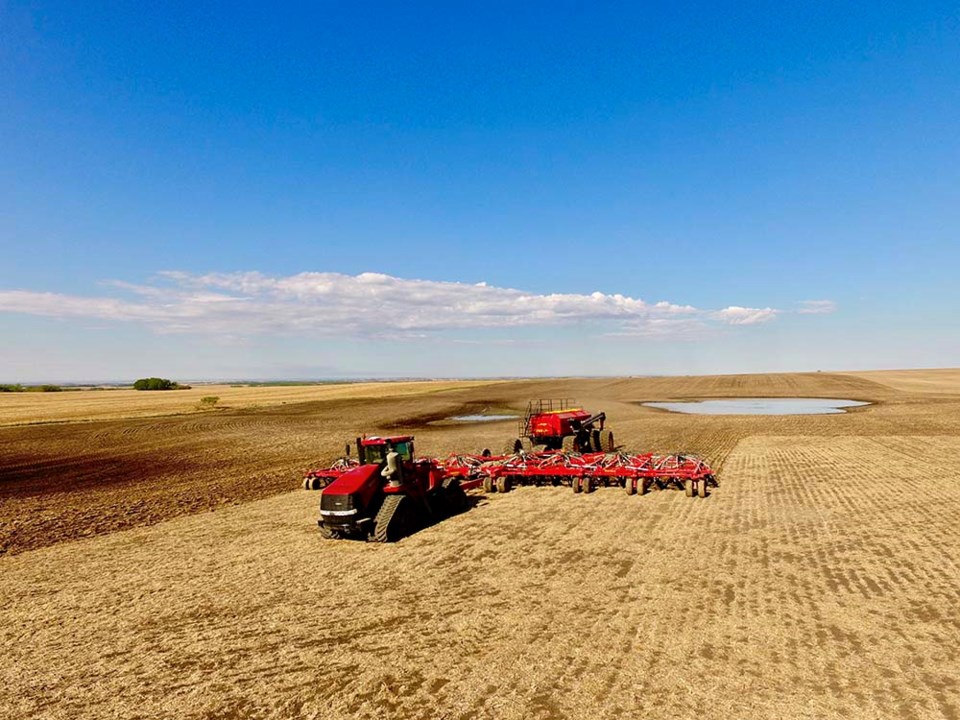ESTEVAN - Producers in southeast Saskatchewan are making great seeding progress in the face of excess moisture in the region, according to the crop report for the period of May 23 to 29. Eighty per cent of this year’s crop is currently seeded in the southeast. This is behind the five-year (2018-22) average of 89 per cent. Producers are still progressing despite the rain showers this week.
Chickpeas and lentils lead the seeding progress in the region, with 93 per cent of chickpeas and 90 per cent of lentils seeded for the year. The crops with the least amount of seeding completed are oats (74 per cent), canola (74 per cent), and soybeans (67 per cent).
Rain was recorded throughout the southeast this week. The Regina region recorded the most rain, with 42 mm received this week. The recent rain and thunderstorms in the region have increased topsoil moisture levels in both cropland and pastures. Currently, 12 per cent of cropland has a surplus of topsoil moisture, 83 per cent is adequate, 5 per cent is short, while less than 1 per cent is very short. Pasture and hayland topsoil moisture levels are very similar with 4 per cent having a surplus of topsoil moisture, 82 per cent is adequate, 13 per cent short, and 2 per cent very short.
Crops across the region are generally in excellent to good condition. Both spring wheat and barley are rated as having 37 per cent of the crop in excellent condition this week. Fall rye is the least excellent crop this week with 13 per cent of the crop rated as being in excellent condition. Producers in the region are noting minor damage in the crops due to flooding, wind, flea beetles and grasshopper pressure in emerging crops.
Producers have begun field scouting in their emerging crops, and some have begun in-crop spraying. Producers are also starting to brand cattle and move them between pastures in the area.




